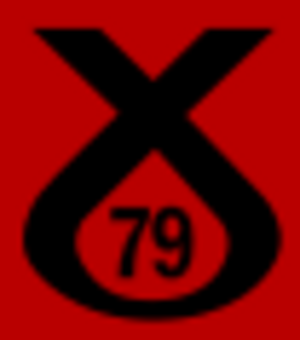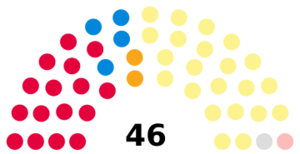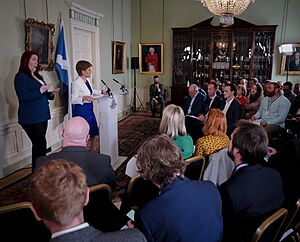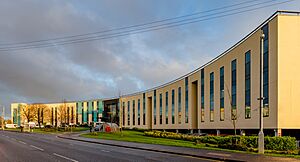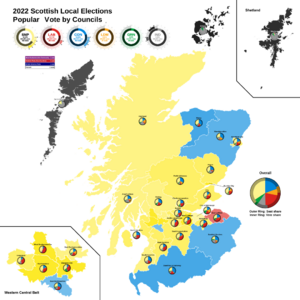Scottish National Party facts for kids
Quick facts for kids
Scottish National Party
Scots National Pairty
Pàrtaidh Nàiseanta na h-Alba |
|
|---|---|
 |
|
| Abbreviation | SNP |
| Leader | John Swinney |
| Depute Leader | Keith Brown |
| Westminster Leader | Stephen Flynn |
| President | Vacant |
| Chief Executive | Murray Foote |
| Founded | 7 April 1934 |
| Merger of | |
| Headquarters | Gordon Lamb House 3 Jackson's Entry Edinburgh EH8 8PJ |
| Student wing | SNP Students |
| Youth wing | Young Scots for Independence |
| LGBT wing | Out for Independence |
| Membership (2023) | |
| Ideology |
|
| Political position | Centre-left |
| European affiliation | European Free Alliance |
| Colours | Yellow Black |
| Anthem | "Scots Wha Hae" |
| House of Commons (Scottish seats) |
43 / 59
|
| Scottish Parliament |
63 / 129
|
| Local government in Scotland |
427 / 1,227
|
The Scottish National Party (SNP) is a political party in Scotland. It wants Scotland to be an independent country, separate from the United Kingdom. The SNP also believes in social democracy, which means it supports policies that help people and make society fairer.
The SNP is currently the largest political party in Scotland. It holds 63 out of 129 seats in the Scottish Parliament and 43 out of 59 Scottish seats in the UK's House of Commons. The party also has many local councillors across Scotland.
A main goal of the SNP is for Scotland to become independent from the United Kingdom. They also want Scotland to be a member of the European Union. The party focuses on policies that are fair and help everyone, based on the idea of civic nationalism, which means valuing everyone who lives in Scotland, no matter where they come from.
The SNP was started in 1934 when two other Scottish parties joined together. They have had members in the UK Parliament since 1967. When the Scottish Parliament was created in 1999, the SNP became the second-biggest party. They later won power in 2007 with Alex Salmond as leader, forming a government. In 2011, they won a majority of seats for the first time.
After Scotland voted against independence in a 2014 vote, Alex Salmond stepped down. Nicola Sturgeon became the new leader. The SNP continued to lead the Scottish government, sometimes as a minority government. In 2021, they made an agreement with the Scottish Greens to share power. Nicola Sturgeon resigned in March 2023 and Humza Yousaf became leader. In April 2024, Humza Yousaf also resigned, and John Swinney became the new leader in May 2024.
Contents
- About the Scottish National Party
- How the SNP Started (1934–1970)
- Becoming a Stronger Force (1970s)
- Challenges and New Ideas (1980s)
- The Salmond Years Begin (1990s)
- Opposing Other Governments (1999–2007)
- SNP in Government (2007–2014)
- Nicola Sturgeon's Leadership (2014–2023)
- Humza Yousaf's Time as Leader (2023 - May 2024)
- John Swinney's Leadership (May 2024 onwards)
- How the SNP Works
- What the SNP Believes In
- SNP Leaders
- SNP in the Scottish Parliament
- SNP in the UK Parliament
- SNP in Local Government
- Images for kids
- See also
About the Scottish National Party
How the SNP Started (1934–1970)
The SNP was formed in 1934. It was created by joining the National Party of Scotland and the Scottish Party. The first leaders were the Duke of Montrose and Cunninghame Graham. Alexander MacEwen was the first chairman.
During World War II, the party had different views. One leader, Professor Douglas Young, was even put in prison for refusing to join the army.
The party had its first success in the UK Parliament in 1945. Robert McIntyre won a seat in Motherwell. However, he lost it just three months later. For many years, the SNP struggled to gain much support.
Things started to change in the 1960s. In 1967, Winnie Ewing won a surprise election in Hamilton. This made the SNP much more well-known across the country.
Becoming a Stronger Force (1970s)
Even after Winnie Ewing's win, the 1970 election was a bit disappointing. But in 1973, Margo MacDonald won another important election in Glasgow Govan.
The year 1974 was a very good year for the SNP. They ran a famous campaign called "It's Scotland's oil." This campaign argued that the money from oil found off Scotland's coast should benefit Scotland more.
In the two general elections held in 1974, the SNP gained many seats. They won 11 seats in the October election, which was a record at the time. They also started to win more seats in local councils.
Later in the 1970s, the UK government agreed to create a Scottish assembly. This was a step towards giving Scotland more power. A vote was held in 1979, and most people voted yes. However, not enough people voted for it to pass. Because of this, the SNP stopped supporting the government, which led to a new election. The SNP then lost many of its seats.
Challenges and New Ideas (1980s)
After the 1979 election, the SNP faced some tough times. There were disagreements within the party. A group called the 79 Group wanted the party to be more clearly left-wing.
Despite these challenges, new ideas emerged. Jim Sillars helped the party support the idea of "Independence in Europe." This meant Scotland would be independent but also part of the European Economic Community (EEC), which is now the European Union. Before this, the SNP had been against joining the EEC.
The SNP did not join other parties in creating a plan for a Scottish Parliament at this time. This was because the other parties did not want to discuss full independence.
The Salmond Years Begin (1990s)
Alex Salmond became the leader of the SNP in 1990. He was elected to the UK Parliament in 1987. The party continued to focus on left-wing policies, like opposing a new tax called the poll tax.
In 1997, the SNP had its most successful UK general election in many years. That same year, the party joined with others to campaign for a Scottish Parliament. This campaign was successful, and the Scottish Parliament was created with powers to make its own laws and raise some taxes.
In 1999, the first elections for the Scottish Parliament were held. The SNP did not do as well as hoped, becoming the second-largest party.
Opposing Other Governments (1999–2007)
From 1999 to 2007, the SNP was the main opposition party in the Scottish Parliament. They challenged the government, which was a partnership between the Labour Party and the Liberal Democrats.
Alex Salmond stepped down as leader in 2000, and John Swinney took over. However, the party continued to struggle in elections. Salmond returned as leader in 2004, with Nicola Sturgeon as his deputy.
SNP in Government (2007–2014)
In 2007, the SNP became the largest party in the Scottish Parliament. Alex Salmond became Scotland's First Minister. He led a minority government, meaning they did not have enough seats to pass laws without support from other parties.

In 2011, the SNP won a huge victory, gaining an overall majority in the Scottish Parliament. This meant they could pass laws without needing support from other parties. This allowed them to hold a vote on Scottish independence in 2014.
In the 2014 independence vote, 45% of people voted for independence, but 55% voted to stay part of the UK. After this result, Alex Salmond resigned as First Minister. Nicola Sturgeon then became the new leader of the SNP.
Nicola Sturgeon's Leadership (2014–2023)
After the independence vote, the SNP did very well in the 2015 UK general election. Led by Nicola Sturgeon, they won 56 out of 59 seats in Scotland. This was their best result ever in a UK general election.
In the 2016 Scottish Parliament election, the SNP lost its overall majority but still formed a minority government. Later that year, the UK voted to leave the European Union in the 2016 European Union referendum. Most people in Scotland voted to stay in the EU, and the SNP strongly opposed Brexit.
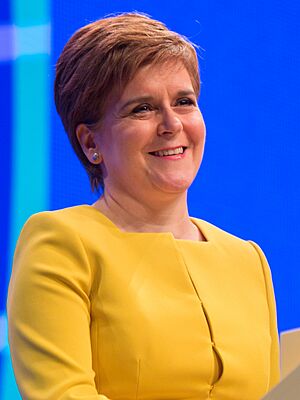
In the 2017 UK general election, the SNP lost some seats but still remained the largest party in Scotland. In the 2019 UK general election, the SNP gained more seats, winning 48. This was their second-best result ever.
In the 2021 Scottish Parliament election, the SNP won 64 seats, just one short of a majority. They then formed a power-sharing agreement with the Scottish Green Party. Nicola Sturgeon said her main goals were to manage the COVID-19 pandemic and push for another independence vote.
In February 2023, Nicola Sturgeon announced she would resign as leader and First Minister. The party's membership numbers had also fallen.
Humza Yousaf's Time as Leader (2023 - May 2024)
Humza Yousaf became the new leader of the SNP and First Minister of Scotland in March 2023. He won the leadership election with 52% of the vote. His time as leader focused on the strategy for Scottish independence and other important policies.
In October 2023, the SNP voted to launch a new campaign for Scottish independence. Humza Yousaf also announced plans to freeze Council Tax and provide more money for the NHS.
In April 2024, Humza Yousaf ended the power-sharing agreement with the Scottish Greens. He then announced his resignation as leader and First Minister a few days later.
John Swinney's Leadership (May 2024 onwards)
On May 6, 2024, John Swinney was confirmed as the new leader of the Scottish National Party. He was the only candidate for the role.
How the SNP Works
The SNP is organized into local Branches. These Branches work together in Constituency Associations for each Scottish Parliament area.
The most important meeting is the annual National Conference. Here, the party decides its policies and elects its main committee. This conference includes:
- Members from every local Branch.
- All SNP members of the Scottish Parliament (MSPs) and UK Parliament (MPs).
- All SNP local councillors.
- Members from groups linked to the SNP, like Young Scots for Independence.
There are also regular meetings called the National Assembly where members can discuss party policies in detail.
Membership
The SNP saw a big increase in members after the 2014 independence vote. In 2013, they had about 20,000 members. By 2015, this number grew to over 100,000. Membership reached its highest point in 2019 with around 125,000 members. By the end of 2023, the number was 69,325.
European Connections
The SNP works closely with Plaid Cymru, a similar party in Wales. Both parties are part of the European Free Alliance (EFA). This is a group of regional political parties in Europe. The EFA works with the European Green Party in the European Parliament.
Since the UK left the EU, the SNP no longer has members in the European Parliament.
What the SNP Believes In
Party Ideas
For a long time, the SNP didn't have a clear political stance, saying it was "neither left nor right." It was formed from parties with different views. However, from the 1960s, the SNP started to become more focused on social democratic ideas. This means they believe in policies that aim for fairness and equality.
Many new members from the Labour Party and trade unions joined the SNP, which helped shift its focus to the left. For example, in 1961, the SNP opposed the US nuclear submarine base in Scotland. They have been against nuclear weapons ever since.
In the 1970s, the SNP officially called itself a social democratic party. They proposed policies like full employment and government help for important industries.
After 1979, there were more debates about the party's direction. Some members wanted it to be even more socialist. The SNP also campaigned against the poll tax, a very unpopular tax introduced in Scotland in 1989.
The SNP has two main groups of thought:
- Gradualists: These members believe Scotland can become independent step-by-step. They think the Scottish Parliament should gain more powers over time, leading to full independence.
- Fundamentalists: These members believe the SNP should focus more directly on achieving independence, rather than taking small steps.
The SNP leadership usually follows the gradualist approach.
Economy
In the 1970s, the SNP famously campaigned with the slogan "It's Scotland's oil." They argued that the money from North Sea oil should benefit Scotland more directly.
The SNP government has changed income tax rates in Scotland. People who earn less pay less tax, and those who earn more pay more. They also replaced a property tax with a new system that charges different rates based on the property's value.
The SNP has supported progressive taxes at a local level too. They have also tried to help small businesses by capping and reducing business rates.
The party includes people with different economic ideas. This is because it is seen as the main way to achieve Scottish independence.
Social Fairness
The SNP has changed its views on some social issues over time. In 2000, they supported getting rid of a law that stopped local authorities from "promoting homosexuality."
In 2012, the SNP government announced plans to allow same-sex marriage in Scotland. This law was passed in 2014.
Under Nicola Sturgeon's leadership, Scotland was recognized as one of the best countries in Europe for the legal rights of LGBT+ people.
The SNP also worked to make it easier for transgender people to change their legal gender. This policy caused some debate within the party.
The SNP has also focused on gender equality. Nicola Sturgeon appointed a cabinet with an equal number of men and women. The party also supports multiculturalism and wants to increase immigration to Scotland.
Global Relations and Defense
The SNP used to support Scotland being a neutral country, meaning it wouldn't join military alliances. However, more recently, the party has decided to support Scotland being part of NATO, a military alliance. This is despite their continued opposition to nuclear weapons being based in Scotland.
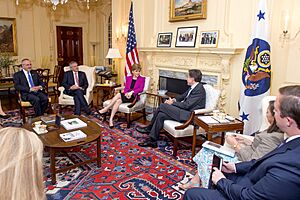
The SNP has supported membership of the European Union since the 1980s. They strongly opposed Brexit and want an independent Scotland to rejoin the EU and NATO. They have also considered the possibility of an independent Scotland using the euro currency.
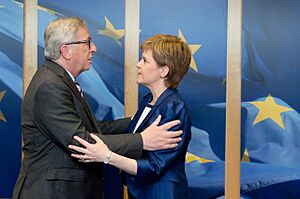
The party also supports giving foreign aid to help other countries, especially Malawi, due to Scotland's historical links there.
Health and Education
The SNP is committed to keeping NHS Scotland as a public service and is against any privatization. They have introduced policies like universal "baby boxes" for new parents, similar to a scheme in Finland. They have also expanded free childcare and free school meals for younger children.
SNP governments have removed hospital parking charges and prescription charges to make healthcare more accessible. They also introduced a minimum price for alcohol to help with alcohol-related problems. The party has also supported making sanitary products universally available.
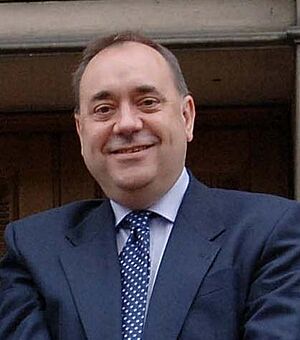
In education, one of the first actions of the SNP government was to remove university tuition fees for Scottish students. They have also focused on helping more people from different backgrounds go to university. The SNP has also made changes to the school curriculum.
Scotland's Future
The SNP believes that Scotland would be more successful as an independent country. Although they lost the 2014 independence vote, they want to hold another one in the future. They believe independence should happen through a fair and agreed process with the UK government.
The party also supports giving more powers to the Scottish Parliament and Scottish Government, especially in areas like welfare and immigration.
The SNP officially supports the monarchy. However, many party members are republicans, meaning they would prefer Scotland to have an elected head of state. The SNP has always opposed the UK's House of Lords, which is not elected, and wants both the House of Lords and the House of Commons to be elected fairly. They also support having a written constitution for Scotland.
SNP Leaders
Leaders of the Scottish National Party
| Leader | Portrait | Term |
|---|---|---|
| Alexander MacEwen |  |
1934–1936 |
| Prof Andrew Dewar Gibb | 1936–1940 | |
| William Power | 1940–1942 | |
| Douglas Young |  |
1942–1945 |
| Prof Bruce Watson | 1945–1947 | |
| Robert McIntyre | 1947–1956 | |
| James Halliday | 1956–1960 | |
| Arthur Donaldson |  |
1960–1969 |
| William Wolfe | 1969–1979 | |
| Gordon Wilson |  |
1979–1990 |
| The Right Hon. Alex Salmond (1st Term) |
 |
1990–2000 |
| John Swinney |  |
2000–2004 |
| The Right Hon. Alex Salmond (2nd Term) |
 |
2004–2014 |
| The Right Hon. Nicola Sturgeon |  |
2014–2023 |
| The Right Hon. Humza Yousaf |  |
2023–2024 |
| John Swinney (2nd Term) |
 |
2024–Incumbent |
Current SNP Leaders in Parliament
- Leader of the Scottish National Party: John Swinney
- Depute Leader: Keith Brown
- Westminster Leader (UK Parliament): Stephen Flynn
SNP in the Scottish Parliament
The SNP has been the leading party in the Scottish Government since 2007. As of March 2023, the Scottish Government's main ministers are:
| Portfolio | Portrait | Minister | Term |
|---|---|---|---|
| Cabinet secretaries | |||
| First Minister | 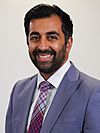 |
Humza Yousaf MSP | 2023–present |
| Deputy First Minister | 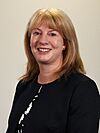 |
Shona Robison MSP | 2023–present |
| Cabinet Secretary for Finance | 2023–present | ||
| Cabinet Secretary for NHS Recovery, Health and Social Care | 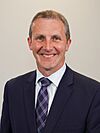 |
Michael Matheson MSP | 2023–present |
| Cabinet Secretary for Education and Skills | 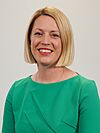 |
Jenny Gilruth MSP | 2023–present |
| Cabinet Secretary for Net Zero and Just Transition |  |
Màiri McAllan MSP | 2023–present |
| Cabinet Secretary for Wellbeing Economy, Fair Work and Energy |  |
Neil Gray MSP | 2023–present |
| Cabinet Secretary for Justice and Home Affairs | 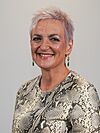 |
Angela Constance MSP | 2023–present |
| Cabinet Secretary for Social Justice |  |
Shirley-Anne Somerville MSP | 2023–present |
| Cabinet Secretary for Rural Affairs, Land Reform and Islands | 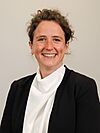 |
Mairi Gougeon MSP | 2021–present |
| Cabinet Secretary for the Constitution, External Affairs and Culture | 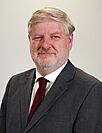 |
Angus Robertson MSP | 2021–present |
SNP in the UK Parliament
The SNP holds most of the Scottish seats in the UK's House of Commons. They do not have members in the House of Lords because they believe it should be abolished.
Here are some of the main SNP spokespeople in the House of Commons:
| Portfolio | Spokesperson | |
|---|---|---|
| Group Leader |  |
Stephen Flynn MP |
| Deputy Leader |  |
Mhairi Black MP |
| Chief Whip |  |
Martin Docherty-Hughes MP |
| Economy |  |
The Rt Hon Stewart Hosie MP |
| Social Justice |  |
David Linden MP |
| Home Affairs |  |
Alison Thewliss MP |
| Justice and Immigration |  |
Stuart McDonald MP |
| Scotland |  |
Philippa Whitford MP |
| Europe and EU Accession |  |
Alyn Smith MP |
| Foreign Affairs |  |
Drew Hendry MP |
| Environment, Food and Rural Affairs |  |
Patricia Gibson MP |
| Women and Equalities |  |
Kirsten Oswald MP |
| International Trade, Northern Ireland and Wales |  |
Richard Thomson MP |
| Energy and Industrial Strategy |  |
Alan Brown MP |
| Digital, Culture, Media and Sport |  |
John Nicolson MP |
| Defence |  |
Dave Doogan MP |
| House of Commons Business |  |
Deidre Brock MP |
| Levelling Up |  |
Chris Stephens MP |
| Cabinet Office |  |
Kirsty Blackman MP |
| Transport |  |
Gavin Newlands MP |
| Health |  |
Martyn Day MP |
| International Development |  |
Brendan O'Hara MP |
| Education |  |
Carol Monaghan MP |
SNP in Local Government
The SNP has 453 councillors in local councils across Scotland, based on the 2022 local elections.
Current SNP Council Leaders
- Clackmannanshire: Les Sharp
- Dundee City: John Alexander
- East Ayrshire: Douglas Reid
- East Renfrewshire: Tony Buchanan
- City of Edinburgh: Adam McVey
- Falkirk: Cecil Meiklejohn
- Fife: David Alexander
- Glasgow City: Susan Aitken
- Moray: Graham Leadbitter
- Renfrewshire: Iain Nicolson
- South Ayrshire: Douglas Campbell
- South Lanarkshire: John Ross
- Stirling: Scott Farmer
- West Dunbartonshire: Jonathon McColl
Images for kids
See also
 In Spanish: Partido Nacional Escocés para niños
In Spanish: Partido Nacional Escocés para niños




